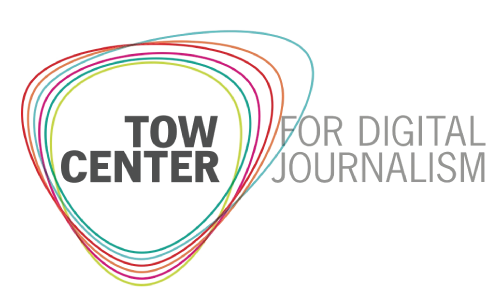Sign up for The Media Today, CJR’s daily newsletter.
Since March, the Tow Center has tracked newsroom cutbacks carried out during the course of the COVID-19 pandemic. At least 66 outlets have permanently closed their doors, and another 42 have been impacted by mergers and consolidations. Most of the newsrooms affected were local outlets independently operated or owned by small news chains. Many were more than a century old, and had been passed down within families over generations.
However, some communities—aided, in many instances, by national initiatives to revive hyperlocal news—are working to make up for those losses. After its closure last spring, the Waterbury Roundabout, a digital news site started by journalism students at the University of Vermont, picked up where the Waterbury Record left off. In South Dakota, a group of local volunteers created the Kingsbury Journal to fill the void left behind by the Lake Preston Times and the De Smet News.
In the Chicago suburbs, the Record North Shore, a nonprofit newsroom, rose from the ashes left behind by the closure of 22nd Century Media’s fifteen for-profit newspapers in March. The company attributed the shuttering of the papers and at least 40 job losses to the impacts of the coronavirus pandemic. In April, three former 22nd Century Media employees—Joe Coughlin, Megan Bernard, and Martin Carlino—went to work to create the Record, an outlet covering hyperlocal government, schools, and businesses in the Chicago suburbs. A Kickstarter campaign raised close to $60,000, and the Record officially began publishing in October.
Now, the co-founders—along with a handful of freelance writers, many of whom are their former colleagues—are working to keep the publication afloat. In only four months, they’ve published more than 275 articles, released 30 podcast episodes, and distributed 16 newsletters to more than 40,000 readers.
The Tow Center spoke with Coughlin, Bernard, and Carlino about their pivot away from traditional, for-profit journalism; the editorial advantages of nonprofit newsrooms; and the need for responsible hyperlocal coverage in Illinois.
—
Tow: Why did you all come together to create a new journalism outlet?
Carlino: We felt like we were abandoning readers at such a crucial time. We knew we had to do something to bring local news coverage back to the area. Obviously, local news is always vital and important, but even more so during a global pandemic that affects so many different avenues of life. We had a month or so to reset a little bit [after being laid off] and then we got back to work. We started putting ideas on a board and figuring out how we could make this work. That’s how we came to the nonprofit model.
Tow: Why exactly did you choose to go the nonprofit route?
Coughlin: Chicago is kind of a hub for nonprofit journalism. I think what was most important, and Megan was the first one I talked to about this, was obviously it’s happening, and it’s “trendy,” but that is not why we chose it. Journalism is a public service, and this is information that’s important right now. Responsible news dissemination is at a critical point in our culture. We’ve seen it divide neighbors; we’ve seen it divide families. So can we be a part of the solution and deliver public service journalism for free? The nexus of it was, yes, we’ve seen it work and yes, we believe in public––service journalism. Another part that was influencing me personally, there’s pressure from advertisers, there just is. The nonprofit model eliminates that altogether.
Carlino: We also have a really good example right here in our own backyard with what’s happening to the Chicago Tribune. Unfortunately, over the last couple of years, it’s been taken over by a hedge fund that is decimating the newsroom firsthand, and we’re seeing that struggle play out as the journalists are trying to fight for more resources and the ownership group is trying to cut them back. [Alden Global Capital offered to buy full control of Tribune Publishing at the start of this year; they currently hold 32 percent.] That’s a legacy paper, the gold standard for journalism in Chicago. So we’re seeing how that battle can take place, and the effect that it’s having. Even if you look back at the past two or three years, they’ve lost dozens of journalists.
Tow: What is your plan for expanding while still maintaining the responsible journalism that you emphasize?
Coughlin: We figure we can cover about 20,000 homes responsibly per one reporter. We’d love to have two more reporters, a beat reporter and a sports reporter, but we want to make sure we get to that public service and civic reporting first. If we do that, we think we can get to these underserved and underrepresented communities.
I’m worried about the suburbs of Chicago. There’s not a lot of news outlets around here where people can get responsible information, so they look elsewhere. And elsewhere there have been some irresponsible outlets that have taken advantage of that, especially in Chicago, and they’ve done so with an agenda to change people’s minds or sway them in whichever way they want and pawn it off as responsible news. I consider it part of our duty to counteract that. We need to have unity around shared facts in the suburbs, about what’s going on in your community. So that is definitely part of our responsibility, to create this unity between neighbors around shared facts and non-partisan coverage.
Tow: The Record is digital only. As journalists coming from a weekly paper, what do you think communities lose when they lose a physical paper?
Bernard: I definitely miss the physical paper. My only concern is that we may be missing the older age group that was dependent on the physical paper every single week. But I think that it’s pretty easy to access our website, and we have different outlets on social media to get people there. I think we were already starting to push to that model of going digital as well. So there’s no right answer, everyone is doing it differently.
I do think it’s very important to keep our website up to date. We’re trying to get new content on there every single day, first thing in the morning. It’s delivering the news even faster than it would with the weekly physical paper, and that’s a perk.
This interview has been edited for length and clarity.
Has America ever needed a media defender more than now? Help us by joining CJR today.





